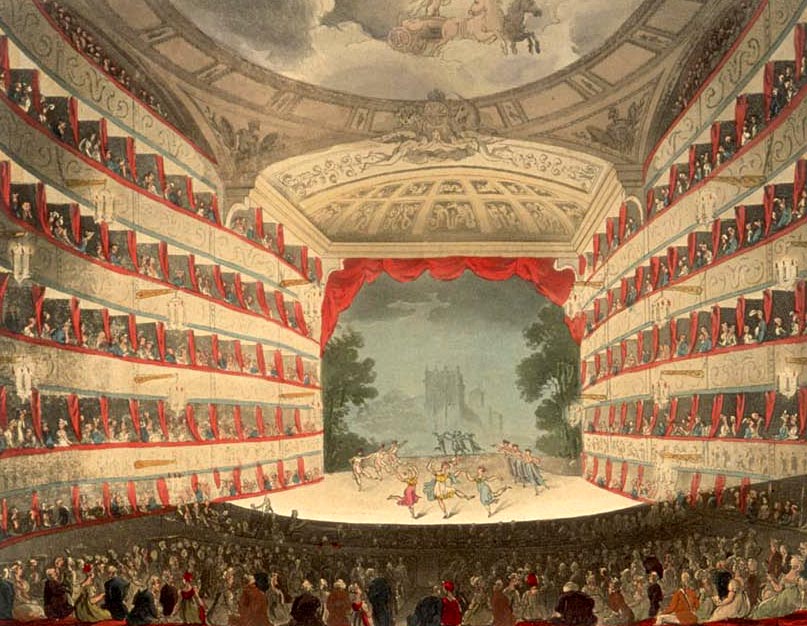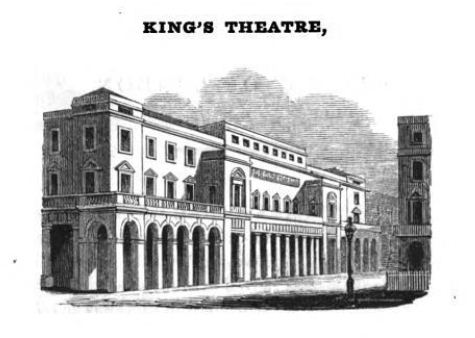 Situated in the West End on Haymarket, the King’s Theatre’s name depended on what gender sat in the throne, sometimes called Her Majesty’s Theatre.
Situated in the West End on Haymarket, the King’s Theatre’s name depended on what gender sat in the throne, sometimes called Her Majesty’s Theatre.
Originally created in the early 1700s a fire saw the second iteration being constructed in 1791. Then three years later, the first public performance of opera was held.

The theatre during the Regency was a place to see Opera, hosting some of London’s first performances of Mozart and other famous operas including Don Giovanni. A contemporary (Thomas Gilliland, 1808) said of the boxes:
“together with the effect of their ornamental beauties, create themost lively images of grandeur in the mind of the spectator. The front of the boxes are painted in compartments, a blue ground with broad gold frames.
The several tiers are distinguished from each other by a difference in the ornaments in the centre of the compartments. In the second tier these ornaments consist of Neptunes, Nereids, Tritons, Mermaids, Dolphins, Sea-horses..On the third tier the ornaments exhibit festoons and wreaths of Flowers, sustained by Cherubs…Leopards, Lions, Griffins and the supporters of the fourth” with the fifth tier similar to the third. Five tiers in all, with each box being roughly seven feet by four feet and constrcuted “to hold six persons with each, all of whom command a view of the stage.” The pit at that time held 800 people, who were admitted for half a guinea.
A dome interior was painted to look like the sky and the stage, with an orchestra in front, measured nearly sixty feet in length (for more interior from 1808: https://books.google.com/books?id=9QAyAQAAMAAJ&pg=PA159&dq=king’s+theatre&hl=en&sa=X&ved=0CFAQ6AEwCDgyahUKEwjqoL_ZnqfHAhWi4qYKHVHkDE0#v=onepage&q=king’s%20theatre&f=false)
For a short period after its opening, it was home to the Drury Lane Company while waiting for their theater to be finished. By 1816, it popularity as an Opera House had John Nash and George Repton remodelling the auditorum to seat a capacity of 2,500.
The Theatre was not a bonafide success until 1830 when it became known as the Italian Opera House again, which soon became the place to visit, and to be be seen in, in London and was even mentioned in guide books.









